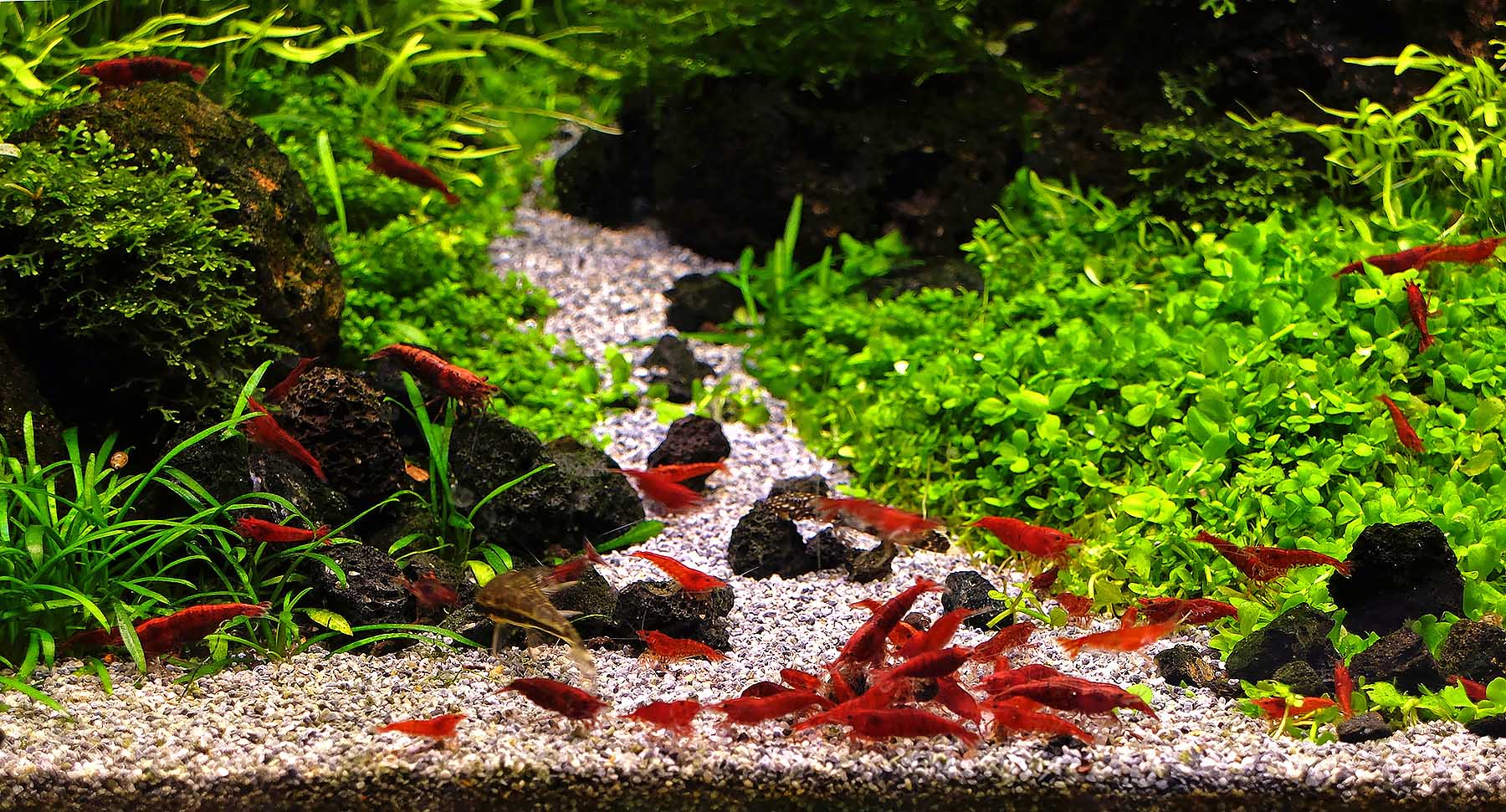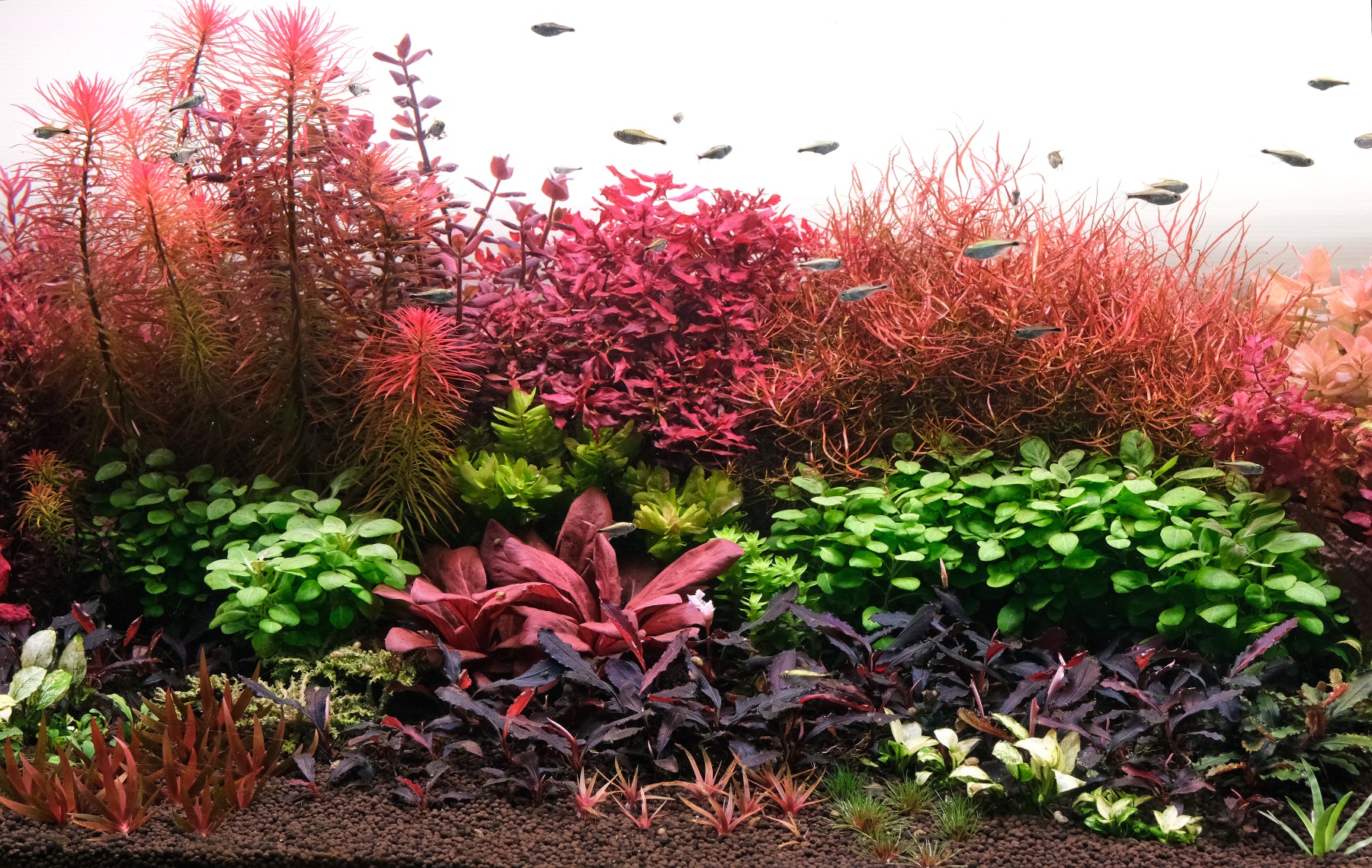Biofiltration 101
Fish & plants (yes, plants too, in the form of old leaves and plant parts) excrete organic waste; a portion of it is broken down into toxic ammonia.
Bacteria (Nitrosomonas and Nitrosococcus among others) & archaea in the filter & substrate converts ammonia (NH3) to nitrite (NO2). Different strains of microbes (Nitrobacter and Nitrospira) converts nitrite (NO2) to nitrate (NO3). In order to these jobs efficiently, microbes require good oxygen levels. This is why wet/dry filters are especially effective where ammonia cycling is concerned. Good oxygenation is also achieved by having good flow and circulation throughout the tank, and by having a clean water surface. In additional to oxygen, bacteria also require Magnesium, phosphates in small amounts
Nitrate levels accumulate in the tank; nitrates can be absorbed by plants or removed by water changes. In a well planted tank, plants can & will utilize ammonia directly, bypassing the cycle. Nitrates can also be removed/reduced to N2 gas by anaerobic bacteria action. Specialized filter media such as Bio-home and deep substrate beds can do this.
Cycling a planted tank means building up these colonies of bacteria before adding livestock. This is so that any toxic ammonia produced by livestock can then be processed swiftly into relatively benign nitrates.
Ammonia cycling is just one form of organic waste in the tank. However, it is the one that affects livestock and algae the most, so tank cycling’s first goal is to get ammonia cycling done.

Snails, shrimps and other detritus feeders also help by consuming detritus and breaking down organic material into smaller particles.
Journey to the micro-cosmos has very good videos of microbes consuming algae.
Microbes and decomposers also participate in consuming organic waste. A biologically matured system is one where there is enough microbial life to break down harmful organic pollutants quickly into benign substances. This creates a more favorable environment for both livestock and plants. The faster waste gets broken down, the less triggers there are for algae to spawn. This is why biological maturity is important even in tanks with no livestock. It takes time for a tank to be biologically mature (a few weeks), even though ammonia cycling itself may be done.
The tank needs to be viewed as a ecosystem as a whole. For planted tanks, having a large portion of the tank planted with healthy, growing plants stabilizes the system faster. Healthy plants oxygenate the water, absorb harmful ammonia and provide a healthy habitat for microbes. Deteriorating plants pollute the environment by contributing detritus and organic waste. Having the plants settle in and grow is an important part of stabilizing a planted tank’s ecosystem.
Some signs that the tank is biologically matured;
– Ammonia tests come in at 0 consistently
– Water clarifies quickly even after substrate has been disturbed
– Water is clear (micro-particles are clumped up by bio-film)
– Dead livestock disappears quickly (presence of larger sized detritus feeders like shrimp)
– Aquarium is not foul smelling (larger organic molecules are broken down quickly)
– Sensitive livestock such as shrimps have high survival rate and reproduces regularly
Some signs that a tank is not biologically matured;
– Cloudy water in new tanks
– Positive ammonia readings
– Frequent triggers of algae; green dust algae and diatoms are especially common
– Melting plants even though parameters seem alright
– Unable to keep sensitive livestock alive (Shrimps, sensitive fish)
Tank is a micro-ecosystem; avoid disturbing the balance
Tanks can easily have their bio-filter community disturbed. These micro-organisms are sensitive; as a good gauge, we would say any action that can harm sensitive fish or shrimp can hurt the microbial community. If you are perpetually unable to keep shrimps alive in your tank – chances are you have a system that is not biologically stable.
– Frequent usage of harsh chemicals such as algicides
– Ammonia spikes due to abuse of terrestrial fertilisers or bad tap water
– Heavy metals or poor quality tap water during water changes
– Large fluctuations in tank parameters such as alkalinity
– Failure to use dechlorinator in tap water that contain chloramines (newbie mistake)
The bio-filter tends to grow to accommodate the amount of waste that the system produces, but it does not easily compensate for spikes in the system. For example, if you feed your fish an amount of food that produces 1ppm of ammonia a day, your tank’s microbial community will grow to digest that amount on a regular basis. The day that you triple feed and get a spike of 3ppm of ammonia – there will be a short term ammonia spike as the microbial community is not used to dealing with that amount of input. So whether you feed your fish more or less, it should be a relatively regular amount.
This concept also apply to water changes. For tanks that are run on a weekly water change schedule, often skipping it letting the tank run say 3 weeks without water changes will often cause algae to trigger.
Bacteria does not work below pH 6 ?
One of the remnants of anachronistic aquarium science is the belief that bacteria cannot survive or function in low pH (say <pH 6) environments. Plenty of natural lakes and rivers have pH ranges below 6 and they are definitely not sterile. Scientific studies such as this one show that bacteria nitrification still happens in low pH environments as they form a protective biofilm where the micro-environment is conducive for their work. Archaea and other microbial life other than bacteria also contribute to the oxidation of ammonia, and in acidic environments, these organisms, rather than bacteria, may form the primary ammonia oxidizers in the system.
Cycling tanks in low pH environments using the typical strains Nitrosomonas and Nitrosococcus will be slower than in higher pH tanks, however, different forms of microbial life will eventually develop to take on the ammonia oxidizer roles in such systems. If the natural pH point of your tank is below 6, there is no need to modify your tank’s water chemistry.
The majority of tanks in our 2hr Aquarist gallery run between pH 5 and pH 6, due to the combination of soft tap water and aquasoil.
To learn more about the detailed steps of tank cycling and comparisons of various methods, click here.
Head here to learn how to control algae in a new tank setup

